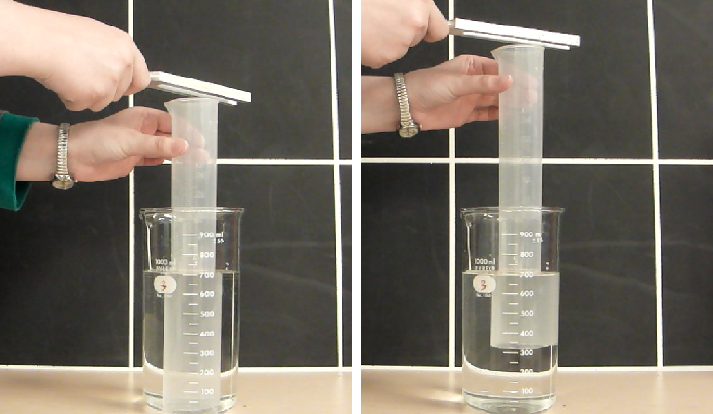An easy way to show sound resonance chambers!
WATCH THE VIDEO:
- Resonance
- Standing Waves
- Sound and Music
Theory:
This demonstration is an example of resonance in a column of air. Here, a wave is sent down the tube from the tuning fork, and is reflected back upwards by the water. This reflected wave begins to interfere with any incoming waves, and will produce standing waves at certain points. A standing wave being formed in the tube is what causes the resonance to occur. For certain wavelengths, and thus certain frequencies of tuning forks, the tube must be a unique length in order for a standing wave to form. This can be seen in the video where for the 512 Hz tuning fork, the length required to produce resonance is much shorter than the length required by the 384 Hz tuning fork.

Figure 1: A comparison of the tube lengths required to achieve resonance for 512 Hz (left) and 384 Hz (right) tuning forks.
The length required depends on two boundary conditions. At the closed end of the tube the air molecule's movement is restricted due to an increased pressure, and therefore a node of the standing wave must be located here. At the open end of the tube it is the opposite; the air pressure is approximately the same as the air pressure outside the tube and the air molecules are free to move. This means there must be an antinode located here. These boundary conditions mean that the length of the tube must be equal to an odd multiple of a quarter wavelength. In mathematical terms:
L = (2n +1)(λ/4), n = 1, 2, 3, 4, 5...
where L is the length of the tube and λ is the wavelength.
Apparatus:
- Tuning forks of different frequencies
- A tube open at both ends (here a graduated cylinder with one end sawed off was used)
- A large jar, partially filled with water
Procedure:
- Place the tube in the jar of water.
- Strike a tuning fork and hold it over the open end of the tube.
- Adjust the height of the tube until you hear the resonance frequency.
- Repeat the previous two steps with different tuning forks, and make a note of how much the tube must be moved in order to achieve resonance for each fork.



